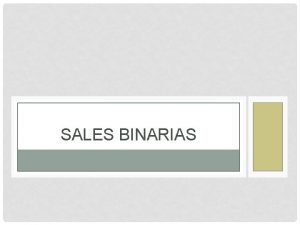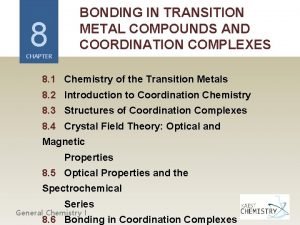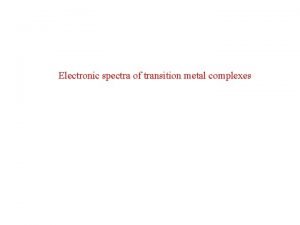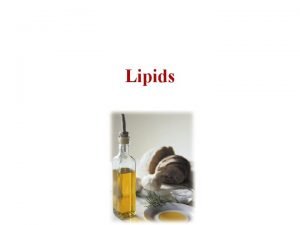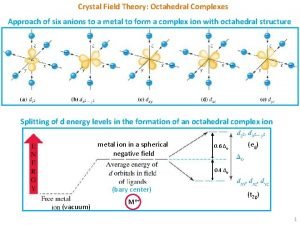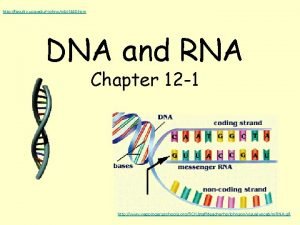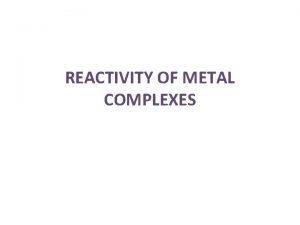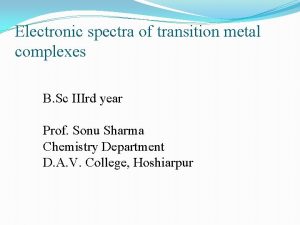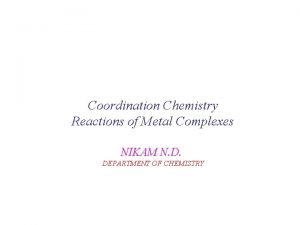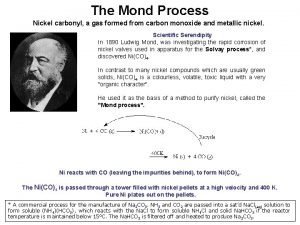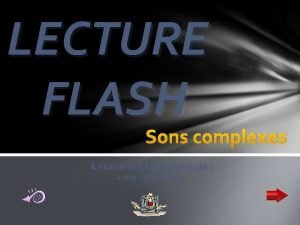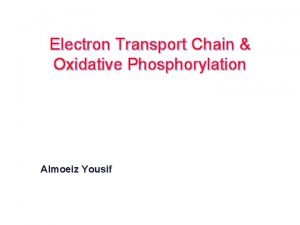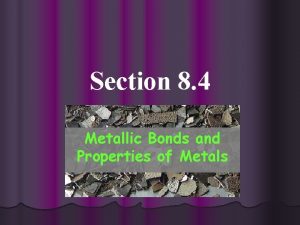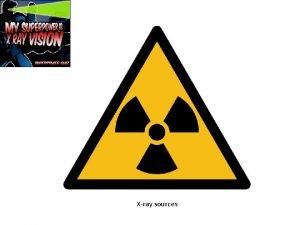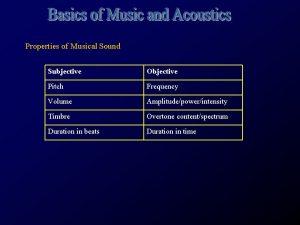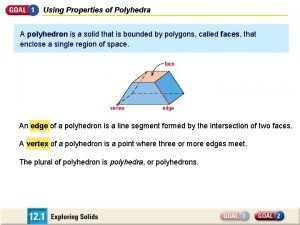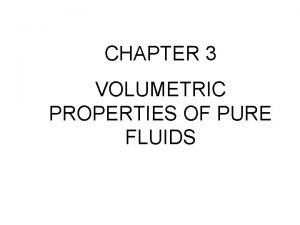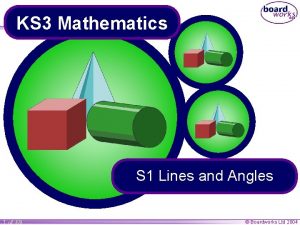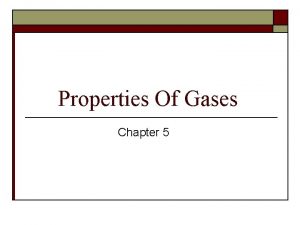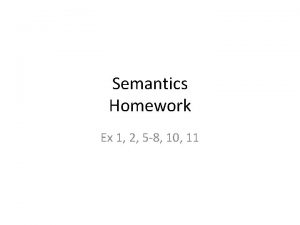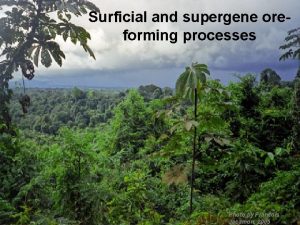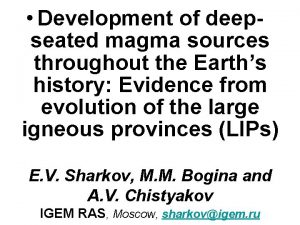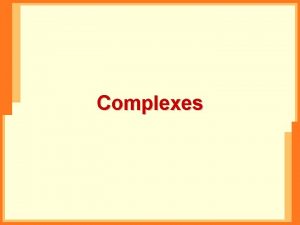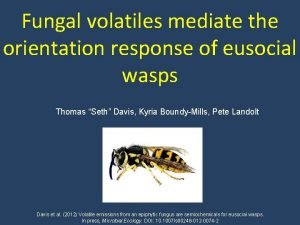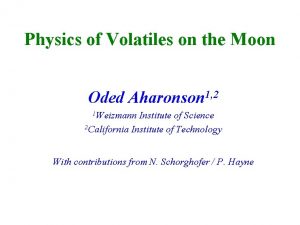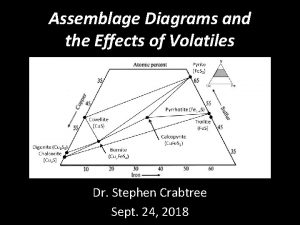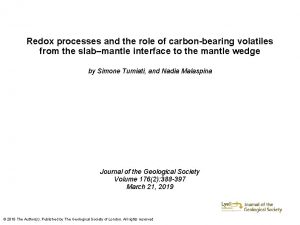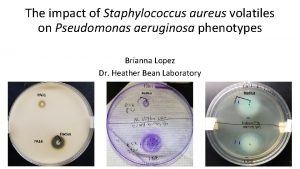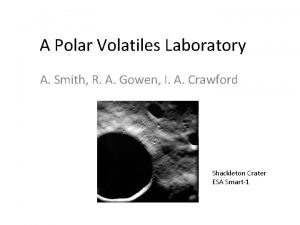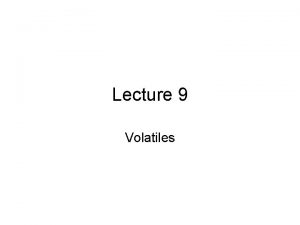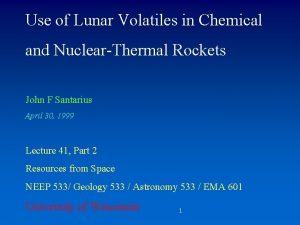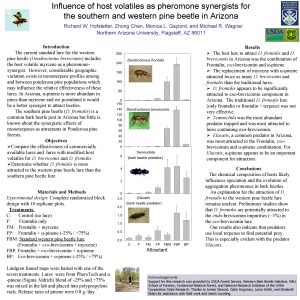Properties of oreforming volatiles in deepseated shearzone complexes































- Slides: 31

Properties of ore-forming volatiles in deep-seated shearzone complexes What to expect for the Bamble belt? Enigmatic deposits i. e. hydrothermal apatite, rutile, REE Also “normal” Ni, Au, Pb Regional scapolitization, albitization Pegmatitic “carbonatites” (? ), hydrothermal or igneous Composition and evolution of metamorphic volatiles Mass balance properties of contrasting shearing Application to the Bamble workshop, NGU, May 2005, Rune B. larsen protholiths during

Shearzone Felsic lithosphere Mafic lithosphere fluids

Composition and evolution of metamorphic volatiles Photo credit: Eske-Sørensen 2005

Metamorphic volatiles are formed or consumed during mineral formation/decomposition and Si-melt formation/solidification Low grade metamorphism Higher grade metamorphism Na. Al 2(Al. Si 3 O 10)(OH)2 + Si. O 2 = Al 2 Si. O 5 + Na. Al. Si 3 O 8 + H 2 O paragonite quartz Kyanite Albite Ca 2 Mg 5 Si 8 O 22(OH)2 + 3 Ca. CO 2 + 3 Si. O 2 = 5 Ca. Si 2 O 6 + 3 CO 2 + H 2 O N 2 from decomposition of K-rich mineraler where K = NH 4+ substitution was optional Albite + Ortoclase + quartz + H 2 O = Silikattsmelte

Eclogite - HP granulite metamorphism N 2 - CO 2 +/- H 2 O(eclogite facies) Granulite facies metamorphism CO 2 Amphibolite facies metamorphism and lower H 2 O, CO 2, +/- CH 4, +/- N 2 References relevant to Norway Andersen T, Touret J, Austrheim H, Elvevold S, Van den Kerkhof A, Larsen R


Decomposition of N - bearing minerals implies high f. O 2 Andersen et al. 1993

Decomposition of N 2 bearing minerals imply high f. O 2 Andersen et al. 1993

HP – UHP METAMORPHISM Larsen et al. 1998

Early to late retrograde metamorphism Larsen et al. 1998

RETROGRADE METAMORPHISM Larsen et al. 1998

Larsen et al. 1998

Larsen et al. 1998

s d ui l f e r a e n o z Sh H 2 O, CO 2, CH 4 N 2 oreforming fluids CO 2, N 2 in fluids H 2 O in Si-melts

Mass balance properties of contrasting protholiths during shearing What is gained and what is lost ?

Felsic protholith Selverstone et al. 1991

Selverstone et al. 1991 Felsic protholith

Elements enriched Elements depleted Selverstone et al. 1991 Felsic protholith

Zone 4, Retrogressed gneiss Elements enriched Elements depleted ZONE 1, Protolith gneiss Selverstone et al. 1991 Felsic protholith

Mafic protholith

Mafic protholith P Elements Enriched Ti Fe Altenberger, 1996 Ni Elements depleted

Mafic protholith Ni P Elements Enriched Fe Altenberger, 1996 Elements depleted

Application to the Bamble situation Known fluids Salinity (? ) Oxygen-fugacity Important mineral-deposits

Known fluids CO 2 -N 2 Touret, 1983 CO 2 -N 2 -CH 4 H 2 O CO 2 - H 2 O – Na. Cl – Ca. Cl 2 (strongly saline) Eske-Sørensen & Larsen, in prep

CO 2 => CO 2 + N 2 => N 2 + CH 4 => + H 2 O (Like Fjørtoft) Touret and Dietvorst, 1983

Salinity (? ) Apatite, scapolite, hornblende, biotite compositions Strongly saline aqueous solutions Photo credit: Eske-Sørensen 2005

Oxygen-fugacity Harlov, 1992

Harlov, 1992

Important mineral-occurrences Mafic protholith Fe – magnetite P – apatite Ti - rutile Ni Cu Au Oxidizing conditions, hard to medium ligand complexing (F-, PO 43 -, Cl-), High T (? ? ? ) Mafic protholith Reducing/neutral conditions, medium to soft ligands complexing (Cl-, HS-), medium to low T (? ? ? )

Important mineral-occurrences Felsic protholith REE , Th … Oxidizing conditions, hard to medium ligand complexing (F-, PO 43 -, Cl-), High T (? ? ? ) Felsic protholith Pb Reducing /neutral conditions, medium to soft ligands complexing (Cl-, HS-), medium to low T (? ? ? ) Bamble workshop, NGU, May 2005, Rune B. larsen

Metamorphic volatiles in deep seated shear zones dvelop from CO 2 and N 2 -CO 2 compositions at HT/HP metamophism and develop towards H 2 OCO 2 and H 2 O during retrograde conditions. CH 4 is an important component at reducing and retrograde conditions. In Bamble, part of the retrograde evolution is characterised by fertile oxidized (? ) strongly saline aqueous solutions that may be associated with regional scapolitization (Eske-Sørensen & Larsen in prep). In shear zones with high fluid/rock ratios, the host rocks are partially decomposed with ~60 % of the protholith being dissolved and mobilised to higher levels Deep level HT metamorphism is often associated with oxidizing conditions where hard metals e, g, Ti, P and W are mobilised in the metamorphic fluids where maybe PO 4, F and Cl- complexing is dominant In Bamble HT oxidizing conditions are gradually followed by medium to low T treducing conditions in the graphite stability field wherea HS, H 2 S and Cl- complexing is dominant and soft metals as Au, Cu and Ni may be mobilised In this f. O 2 evolutionary scheme mafic protholiths may be the source of Fe, Ti and P occurrences as well as Au, Cu, Ni deposits whereas felsic protholiths may be the source of REE and Pb occurrences
 Sales neutras formulacion
Sales neutras formulacion Spectrochemical series
Spectrochemical series Oedipus complex and electra complex
Oedipus complex and electra complex What is nephelauxetic effect
What is nephelauxetic effect Spherical complexes of emulsified fats are known as
Spherical complexes of emulsified fats are known as δo
δo A ________ is formed from beadlike histone-dna complexes.
A ________ is formed from beadlike histone-dna complexes. Tasco maquina simple
Tasco maquina simple Inert and labile complexes
Inert and labile complexes Limitations of orgel energy level diagram
Limitations of orgel energy level diagram Inert and labile complexes
Inert and labile complexes Mond process
Mond process Exemples des phrases complexes
Exemples des phrases complexes Voyelles complexes
Voyelles complexes Potential energy diagram
Potential energy diagram Actinide contraction
Actinide contraction K complexes eeg
K complexes eeg Slidetodoc. com
Slidetodoc. com Thermogin
Thermogin Man camps in texas
Man camps in texas Extensive properties and intensive properties
Extensive properties and intensive properties Physical and chemical properties
Physical and chemical properties Section 4 metallic bonds and the properties of metals
Section 4 metallic bonds and the properties of metals Properties of x ray ppt
Properties of x ray ppt What are the subjective properties of music?
What are the subjective properties of music? Determine whether the solid is a polyhedron
Determine whether the solid is a polyhedron Idempotent matrix
Idempotent matrix Volumetric properties of pure fluids
Volumetric properties of pure fluids Properties of polygon
Properties of polygon 5 properties of gases
5 properties of gases Semantic properties
Semantic properties Quadratic function in standard form
Quadratic function in standard form
